The background: I have a 10 years old 12V black & decker cordless drill, the batteries died successively, and I connected a 2 pin male plug try to use a PC power supply [PCPS] to run it.
What happened when I did the test is, a 460W PCPS works good, and a 450W PCPS didn't.
The weird phenomenon is when I directly plugged the 2 pin male into the PCPS's female 2 pin connector, the drill shaking and stop. I hooked the drill through a piece of twisted pair wire which has 2 pin female in one end and test clips the other end. The drill runs well.
The attached pictures shown the detail, any one can tell some thing about?
to use a PC power supply [PCPS] to run it.
What happened when I did the test is, a 460W PCPS works good, and a 450W PCPS didn't.
The weird phenomenon is when I directly plugged the 2 pin male into the PCPS's female 2 pin connector, the drill shaking and stop. I hooked the drill through a piece of twisted pair wire which has 2 pin female in one end and test clips the other end. The drill runs well.
The attached pictures shown the detail, any one can tell some thing about?
Asked
Active
Viewed 519 times
0
laoadam
- 11
- 3
-
1Maybe the "bad" supply needs a 10W 5V light bulb load on 5V or halogen bulb or 10W resistor to make the 12V stable. But a DMM meter ought to tell you. The way PC PSU's work is regulate on 5V and all others track by turns ratio and some need a few % preload on 5V – Tony Stewart EE75 Dec 05 '18 at 01:48
-
I forgot to mention that the weird phenomenon happened on the same one PCPS - 450 W. – laoadam Dec 05 '18 at 02:08
-
**All PSU's are not created equally.** You just found a transient test that causes one to fail to maintain low ripple.. The drill is a very high pulse stress current when the battery is weak with high resistance the current pulses * R create voltage pulses which may exceed internal PSU protection for disable then shutdown. Also the protection is too tight 3% vs 5% or the regulator noise is too high and interfering with the motor Hall sensors. and misfiring. BLDC motors need low ripple to be less than Hall sensor error threshold. try 5V load 10W – Tony Stewart EE75 Dec 05 '18 at 02:27
-
I just wonder why the drill run and not run based on the different cable? – laoadam Dec 05 '18 at 03:34
-
Should I know what was different? Inductance and resistance adds more noise or ripple. Ideally it should be braided heavy guage – Tony Stewart EE75 Dec 05 '18 at 05:23
-
3The losses from the extra cable would limit the current drawn (during startup, stall, etc), and in a lucky case that may be enough to keep the supply overcurrent protection from tripping. Battery powered tools just aren't suitable for mains conversion; mains powered tools are *completely* different inside. – Chris Stratton Dec 05 '18 at 05:47
-
Hi Chris, You pointed out the key。 yes, the cable length is a matter cause of its inductance. when I said the drill shaking and stop is because of the 450W PCPS lockout. I added two pieces twist cable at length of 80 inches + 40 inches, the drill runs however connected. – laoadam Dec 05 '18 at 13:42
1 Answers
2
Battery powered power tools cannot possibly "run well" from a PC power supply. The reason is that PC power supplies usually have certain cut-off threshold in current supply, and will disengage abruptly when heavy loaded. Power tool motors, unfortunately, have very low impedance when stalled (and started), which require peak currents in 30-50A range, and PC PSU just cannot handle this. Your drill might start, but any serious load will lead to "shaking and stopping". Compare your problem with this one, How many amps does a 18v cordless drill draw?
Ale..chenski
- 38,845
- 3
- 38
- 103
-
True for new batteries, but old ones get high resistance ( e.g. rise from 50mOhm to 1 Ohm) so current is within tolerance. Usually old PSU's fail from no load condition on 5V or not enabled correctly. with gnd jumper – Tony Stewart EE75 Dec 05 '18 at 01:52
-
@TonyEErocketscientist, the phenomenon of insufficient load is a thing of deep past. Most modern PSU are happy to run with internal exhaust fan. The problem is that batteries can supply peak currents and don't disconnect, while PSUs turn off, and might require power off-on cycling to recover. – Ale..chenski Dec 05 '18 at 01:58
-
1Some 450W PSU's are rated for 35A on 12V https://www.newegg.ca/Product/Product.aspx?Item=N82E16817438130 His may only be 25A~30A but that should still be enough. – Tony Stewart EE75 Dec 05 '18 at 02:17
-
Hi Ale, my drill did works good at least by my testing with a 1/2 drill bit drill holes on wood, it's what I can do now. I hooked a splitter with meter to measure the current, the reading just comes with 0.5 A no load, and 2.6 A when drill. The only reason I can guess is the new splitter may have large tolerance without calibration. – laoadam Dec 05 '18 at 03:31